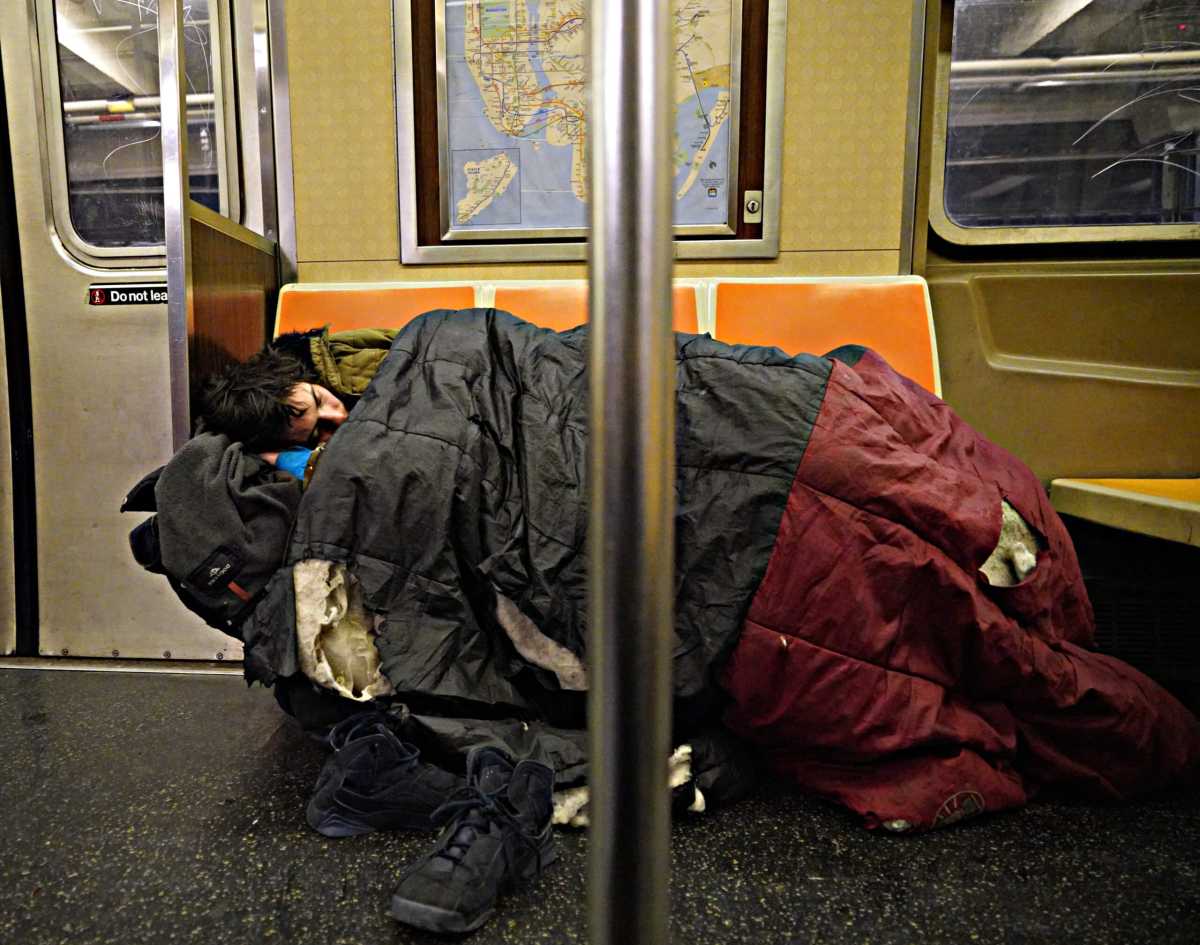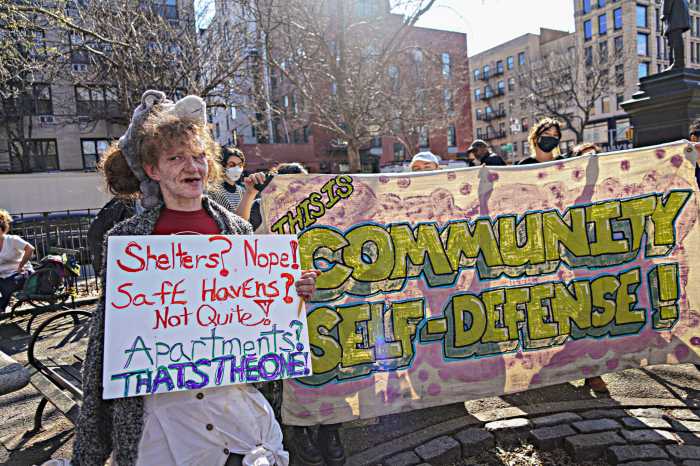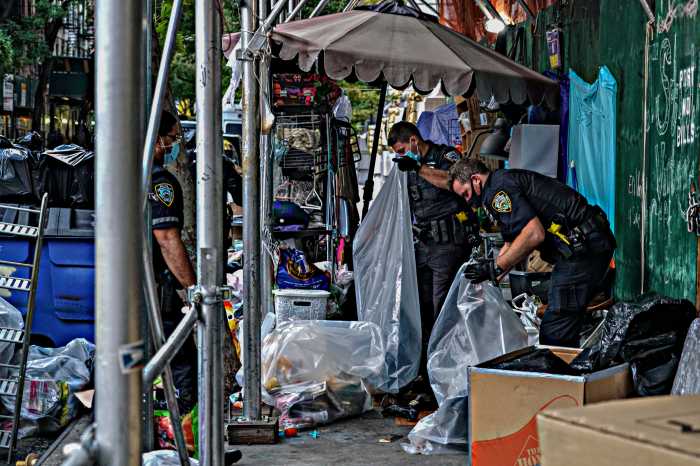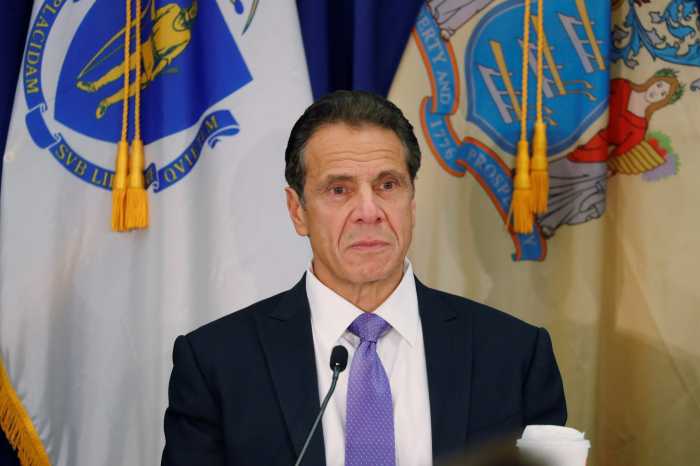After almost three months of Mayor Eric Adams’ Subway Safety plan, his administration announced Wednesday that 1,379 individuals experiencing homelessness accepted services – but several nonprofit outreach organizations are skeptical of treatment effectiveness.
The Subway Safety Plan, announced in February, outlined the administration’s goal to expand Department of Homeless Services response teams, direct the Police Department to enforce the Metropolitan Transportation Authority’s rules, and add clinicians to connect individuals with resources, as well as creating safe havens, drop-in centers, stabilization beds, and more. Through this plan, Adams also initiated the end-of-line (EOL) outreach efforts to build trust and connect New Yorkers to city services.
The mayor has called sleeping in subways inhumane for those experiencing homelessness and unfair for straphangers.
“Three months into our work making subways safer and connecting New Yorkers in need with services, and it is evident that our efforts are working,” Mayor Adams said. “We have connected more than 1,300 New Yorkers with shelter and other vital services and our teams are making hundreds of engagements every day on the subways, a monumental milestone.”
In addition to removing the homeless from the subway systems, Adams also pushed what many advocates state is a heavy-handed approach with his encampment sweeps. Homeless rights workers fear the mayor is pushing ultimatums and not options by forcing the homeless from the subway and out of their encampments, giving individuals no alternatives aside from a shelter system they feel is dangerous, or leaving them exposed on the city streets to the elements.
“The Subway Safety Plan continues to be a policing effort that criminalizes homelessness and poverty. Homeless and poor people are being targeted, policed, and coerced into the shelter system at the end of the line,” Peter Malvan, a homeless advocate at the Safety Net Project, told amNewYorkMetro. “It is highly suspect that despite all the resources being invested into this initiative, the city will not say whether people are actually staying in these placements or what conditions people are being placed into as the pandemic continues.”
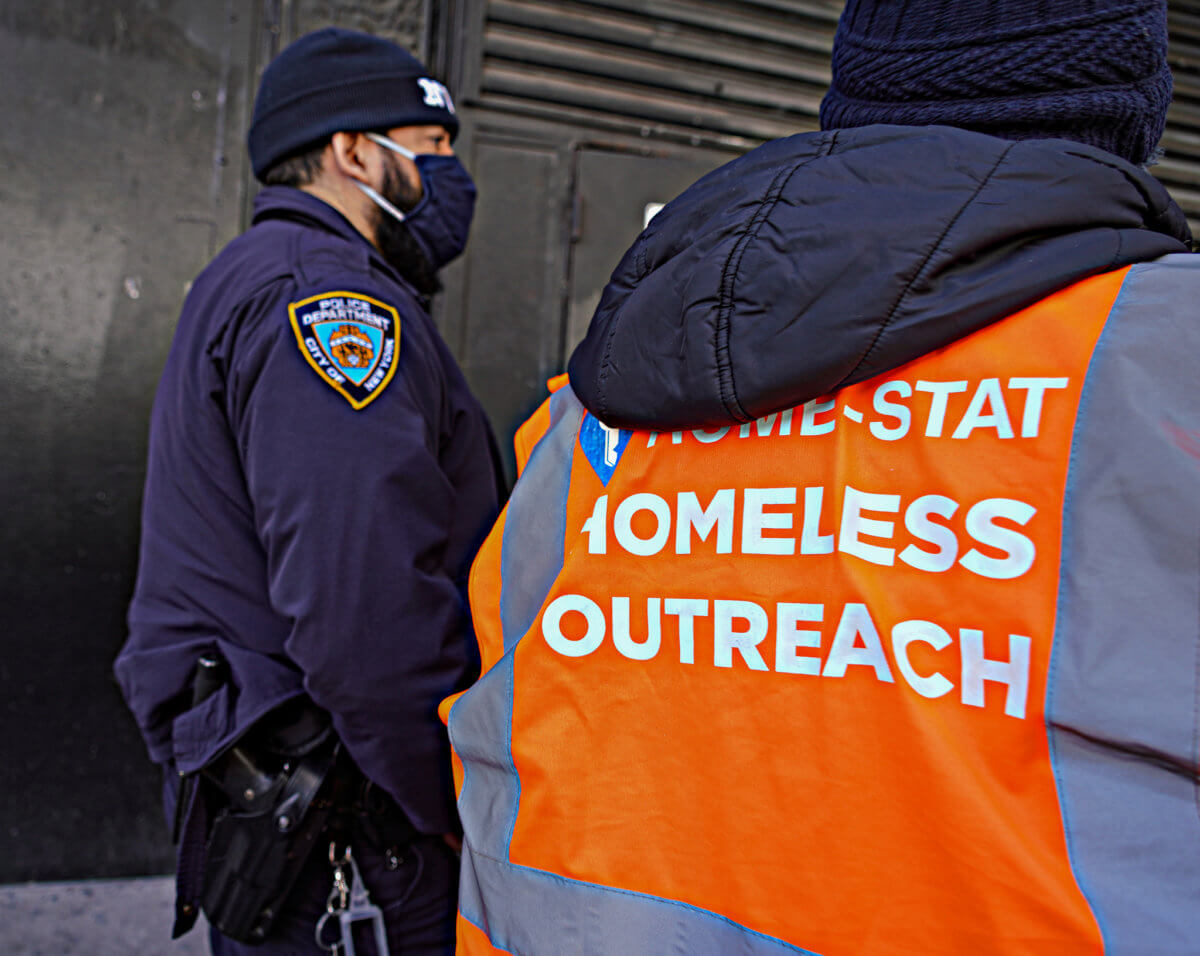
While over 1,300 individuals have accepted services, it is currently unclear if these stays were successful or permanent. In April, amNewYork Metro spoke to Ricardo Morales and Francisco who accepted services for the mayor’s newly minted Morris Avenue Safe Haven; however, they were turned away upon their arrival since they were from a different borough.
“This administration has its priorities backwards,” said Sara Newman, director of organizing for the Open Hearts Initiative. “The mayor should be ramping up permanent housing and single-room Safe Havens and stabilization beds rather than focusing on displacing people. That’s why it’s so disappointing that the administration has been canceling single-room Safe Haven and stabilization bed sites.”
Additionally, Newman said, the data is hazy.
“It’s not clear how many people actually stayed at the sites they were transferred to, or how many folks were sent to congregate settings versus settings with more privacy,” she told amNewYork Metro. “We know from DHS’s own data from 2020-2022 that less than a quarter of the folks at end-of-line subway stops who accepted placement in congregate shelters stayed there. And ultimately, if the administration is canceling the low-barrier sites that they say they’re sending people to, then those numbers mean very little.”
According to the mayor’s report, outreach teams are making, on average, 744 engagements and are located at 24 end-of-line stations every night. In addition, the mayor has allocated $171 million a year to enhance the efforts and expand resources such as safe have, stabilization beds, and “Drop-in Centers.”
“It’s a new day in New York, and this announcement shows what is possible when we can break down silos between agencies and work in partnership with the state and the MTA toward a collective goal,” Mayor Adams said in a press release. “There is no one-size-fits-all approach, so we will continue to evaluate what works best, while never wavering from our commitment to help put New Yorkers experiencing homelessness on a path towards permanent housing and stability and building a safer subway system for all.”



